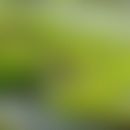Synonym(s)
DefinitionThis section has been translated automatically.
Lichen Islandicus, also known as Iceland moss , is a drug used in herbal medicinal products for the treatment of irritation of the mucous membranes of the mouth and throat or loss of appetite.
HMPC monograph: Traditional-use: irritation of the mucous membranes of the mouth and throat, dry irritating cough, intermittent loss of appetite
ESCOP monograph: dry cough, inflammation of the mucous membranes of the mouth and throat.
Commission e-monograph: irritation of the mucous membranes of the mouth and throat, dry irritating cough; loss of appetite.
Empirical medicine: Roborans to stimulate appetite during convalescence
IngredientsThis section has been translated automatically.
You might also be interested in
EffectsThis section has been translated automatically.
Lichen Islandicus has soothing appetite stimulating, weak antimicrobial, antiphlogistic and immunomodulating effects
Field of application/useThis section has been translated automatically.
Icelandic moss is used to treat irritation of the mucous membranes in the mouth and throat or loss of appetite. Isla junior® preparations are available for children from the age of 4 for cold-related throat and swallowing problems.
DosageThis section has been translated automatically.
The daily dose of the drug is between 4 and 6 g, depending on the preparation. The drug is taken in the form of infusions or pastilles.
Undesirable effectsThis section has been translated automatically.
No undesirable effects are known.
ContraindicationThis section has been translated automatically.
Due to lack of data, do not use during pregnancy or lactation and do not use in children under 18 years of age.
InteractionsThis section has been translated automatically.
There are no known interactions with other active ingredients.
LiteratureThis section has been translated automatically.
- Harmens H (2010) Heavy metal and nitrogen concentrations in mosses are declining across Europe whilst some "hotspots" remain in 2010. Environ Pollut 200:93-104.
- Schilcher H (ed.) in, Leitfaden Phytotherapie, Urban & Fischer Verlag (2016) Munich, p. 166 f.
- https://arzneipflanzenlexikon.info/islaendisches-moos.php
- https://www.ema.europa.eu/en/documents/herbal-monograph/final-european-union-herbal-monograph-cetraria-islandica-l-acharius-sl-thallus-first-version_en.pdf
- Wenigmann M. (2017) Phytotherapy medicinal drugs, phytopharmaceuticals, application. Urban & Fischer, pp. 133-134





